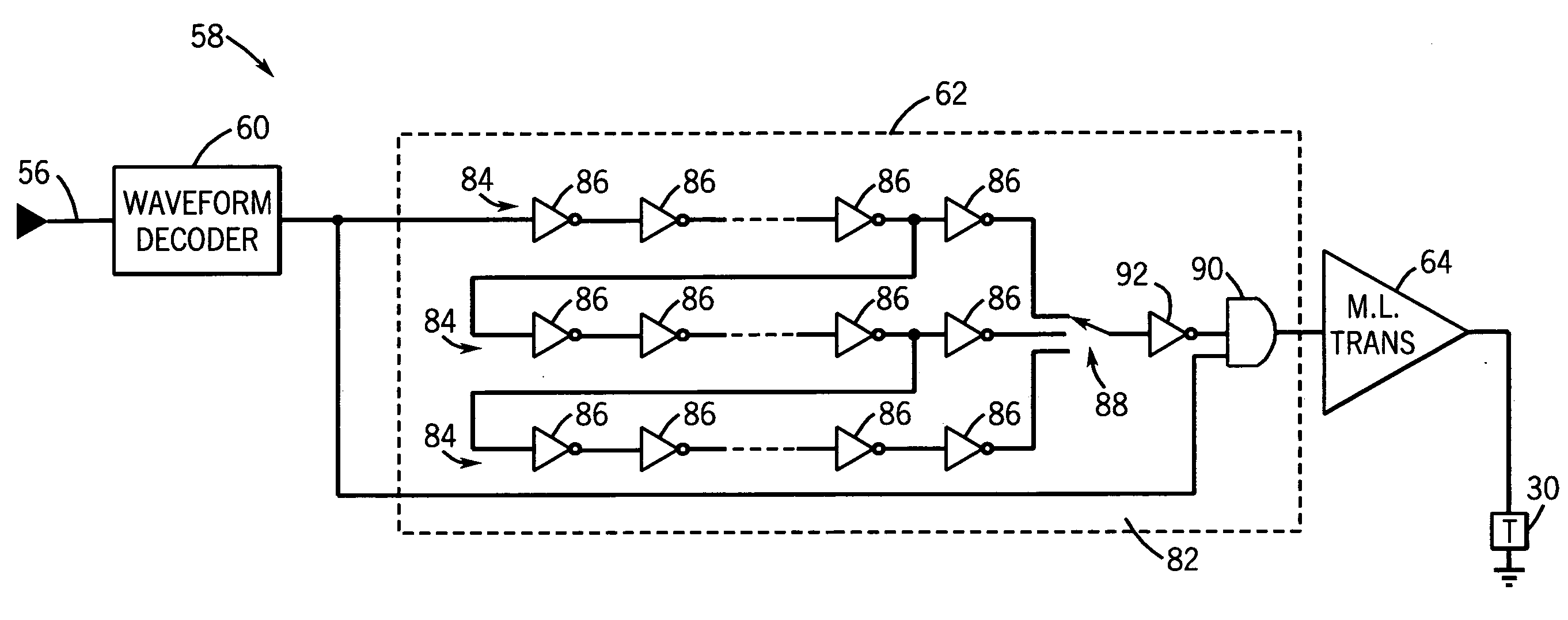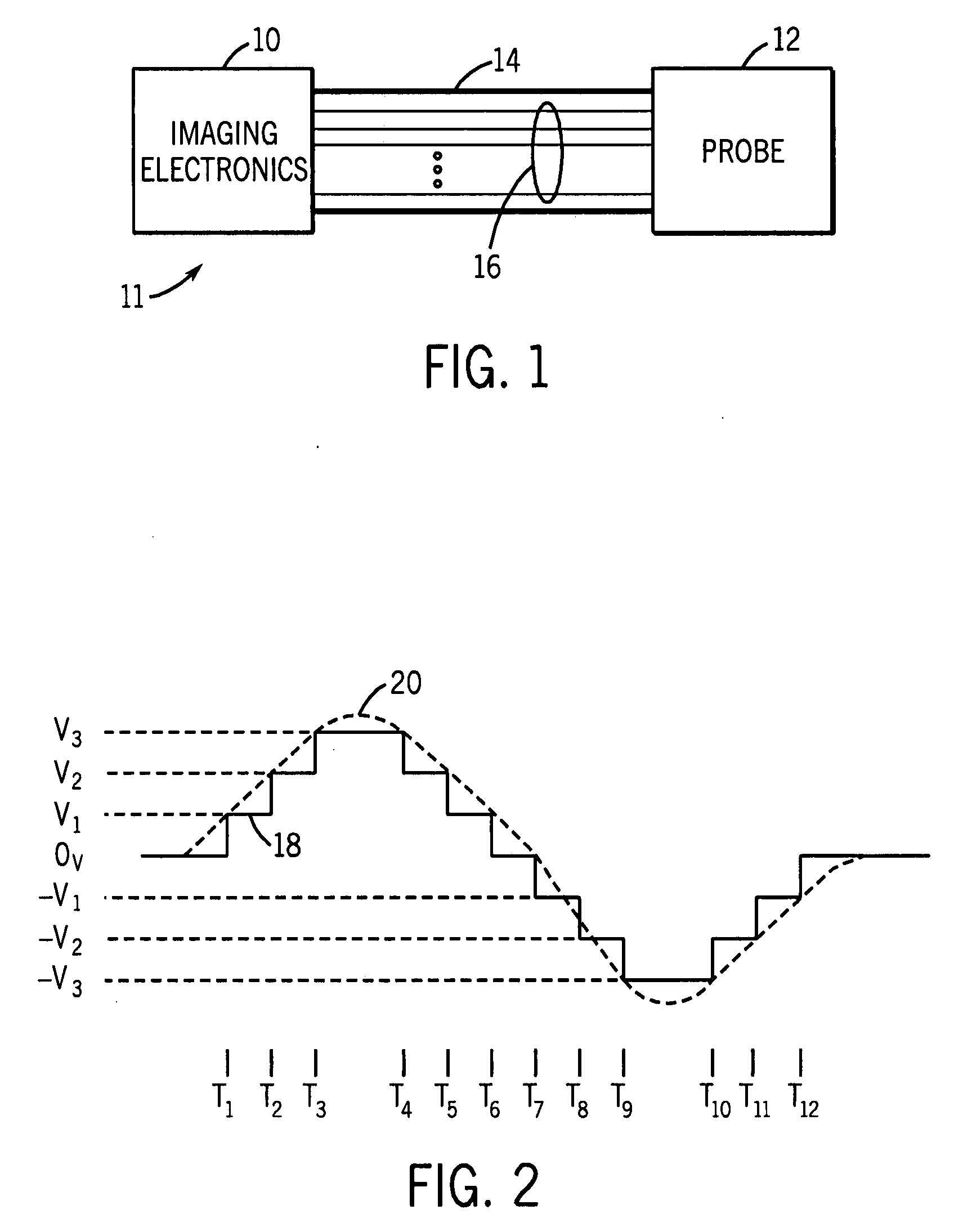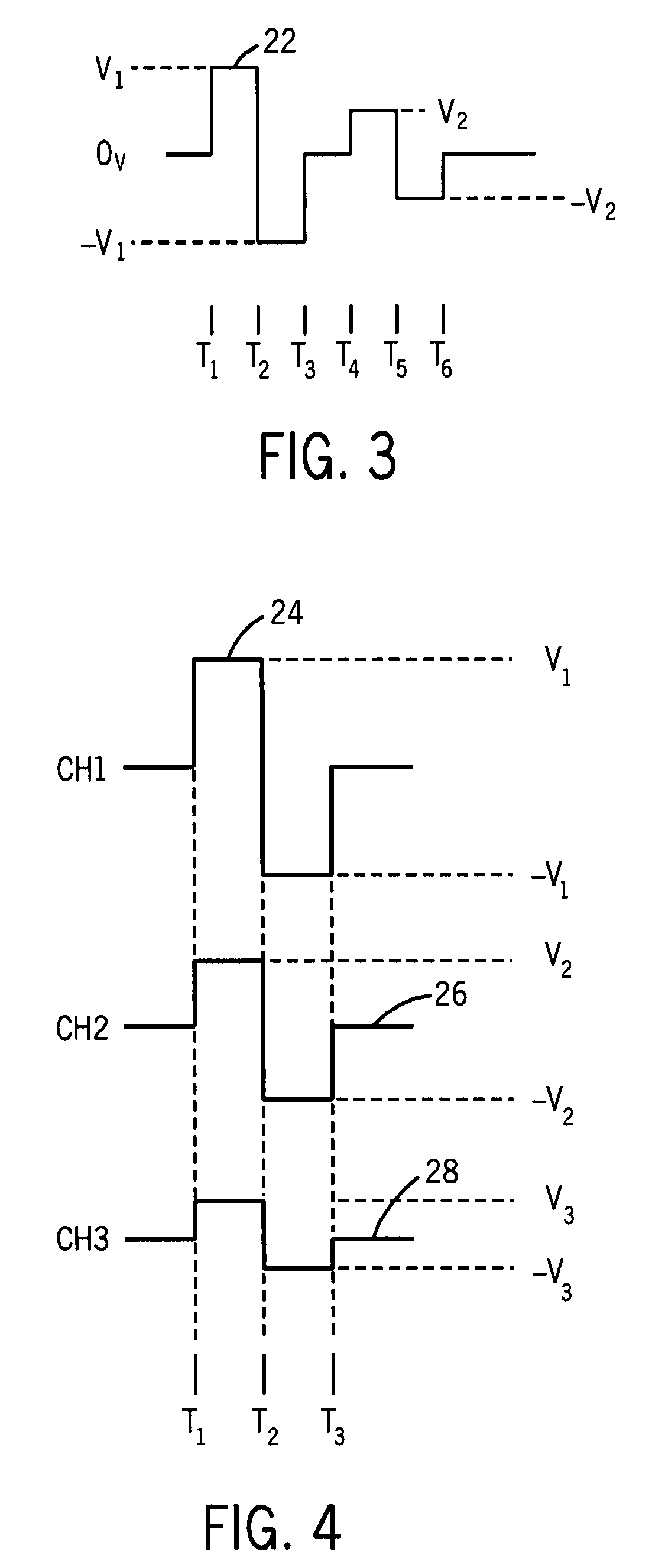Reconfigurable array with multi-level transmitters
a multi-level transmitter and configuration array technology, applied in the field of ultrasonic systems, can solve the problems of inability to connect several thousand elements to respective pulsers in the system, inability to ergonomically work, and large amount of power, and achieve the effect of small footprint and minimal power expenditur
- Summary
- Abstract
- Description
- Claims
- Application Information
AI Technical Summary
Benefits of technology
Problems solved by technology
Method used
Image
Examples
first embodiment
[0038]Referring initially to FIG. 7, the multi-level transmitter cell 58 includes a waveform decoder 60 comprising a comparator 66 and a voltage translator 68. In this embodiment, the comparator 66 acts as a decoder. Further, the output stage 64 includes each of a PMOS and NMOS transistor 70 and 72, respectively, coupled in series between a voltage source and ground. As will be appreciated, while ground is used as a reference, it will be understood that this reference could be replaced by a negative supply equal to or a different value from the positive supply, without altering the functionality of the circuit. The transmitter controller 62 acts like a set point controller such that the output voltage is compared to the input control voltage and any error is used to drive the output to match the control voltage, as will be appreciated by those skilled in the art. It will further be appreciated that the output drive devices are shut off once the desired voltage is reached and are thu...
second embodiment
[0039]FIG. 8 illustrates the multi-level transmitter cell 58. Rather than providing a feedback loop from the output stage 64 to the waveform decoder 60, digital to analog converters (DACs) 74 are employed as the transmitter controller 62 to control the output stage 64 and transmission to the acoustical sub-element 30.
third embodiment
[0040]FIG. 9 illustrates the multi-level transmitter cell 58. In the embodiment illustrated in FIG. 9, the transmitter controller 62 comprises a switch 76 to allow for switching between four gate voltages Vgs1-Vgs4 relative to the high voltage source voltage HVP, depending on the input control waveform. In one embodiment, Vgs1=HVP-0V, Vgs2=HVP-1.0V, Vgs3=HVP-2.5V and Vgs4=HVP-5V, for example. The gate voltage is applied to a resistor loaded output stage 64 comprising a transistor 78 and a resistor 80. The gate of the transistor 78 is controlled by the gate voltage Vgs1. Here the transistor 78 is a high voltage field effect transistor which is used to modulate a current that is fed into the resistor 80. The output voltage across the transducer 30 is that developed across the resistor 80 due to the drive current. Advantageously, an output stage 64, in accordance with this exemplary embodiment may be implemented in a very compact area and will draw a non-negligible current during the t...
PUM
 Login to View More
Login to View More Abstract
Description
Claims
Application Information
 Login to View More
Login to View More - R&D
- Intellectual Property
- Life Sciences
- Materials
- Tech Scout
- Unparalleled Data Quality
- Higher Quality Content
- 60% Fewer Hallucinations
Browse by: Latest US Patents, China's latest patents, Technical Efficacy Thesaurus, Application Domain, Technology Topic, Popular Technical Reports.
© 2025 PatSnap. All rights reserved.Legal|Privacy policy|Modern Slavery Act Transparency Statement|Sitemap|About US| Contact US: help@patsnap.com



